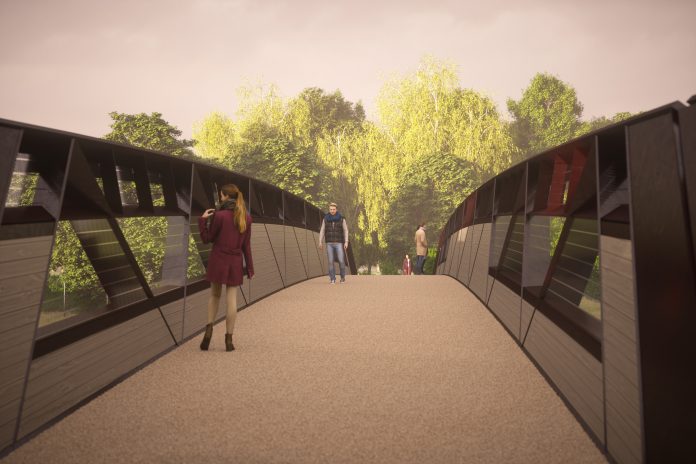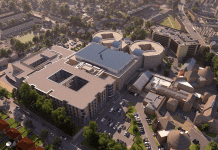The first rural footbridge design has been revealed by HS2, in images showing the bridges as they will appear in Buckinghamshire, Oxfordshire and West Northants
HS2 has released images of the rural footbridge design that will carry rural footpaths and bridleways across the new high-speed railway as it passes through Buckinghamshire, Oxfordshire and West Northamptonshire.
Eleven locations have been identified for the new design – around Aylesbury, Chipping Warden, the Chilterns, Westbury and Finmere. Other footpaths and bridleways will share farm access bridges and road bridges or cross the line under viaducts or over the top of tunnels.
Weathering steel and sleek design will fit in with the surrounding countryside
Weathering steel – which ages naturally to a russet brown colour – was chosen to help match the tone of the surrounding countryside, while the plates that form the structure of the bridges will be angled to appear narrower and lighter.
The sides of the lightweight bridges will lean outwards to maximise views of the sky and improve the experience of people crossing the railway.
The internal faces of the bridges feature oak panelling and perforated stainless steel to allow views along the railway.
Each span will be slightly higher in the middle so that they appear to leap over the railway. Most of the bridges will consist of just one 42m span, with extra spans added where necessary to create bridges of up to 102m long.
Accessibility has been prioritized for both pedestrians and the local equestrian community
The bridges were designed by HS2’s main work contractor, EKFB – a team made up of Eiffage, Kier, Ferrovial Construction and BAM Nuttall – working with Arcadis Setec Cowi and Moxon.
Moxon’s managing director Ben Addy said:
“Safety is always paramount, however accessibility and transparency were also the key design drivers for these bridges – characteristics one wouldn’t always associate with railway overbridges.”
“The design team looked at how we could make the bridge approaches and the landscape around them completely accessible to create a seamless user experience for all, whether travelling on foot, on bike, on horseback or with any type of mobility aid.“
The approach paths will be built into the earthworks on either side of the bridge. This also means that all the footbridges will effectively be step-free.
Footbridges will be 2.5m wide, while bridleways will be 3.5m wide to allow two horses to pass comfortably and safely.
Designed with guidance from the British Horse Society, the bridges which carry bridleways will follow the same basic pattern, with a recycled, non-slip rubber deck and the structure acting like a baffle to stop horses being distracted by passing trains.
The footbridges were designed to handle the pressure waves created by trains passing underneath at speeds of up to 225mph (360km/h). As an extra precaution, the bridges can also be adjusted after construction to ensure the solution works.
The first footbridge is expected to be installed in October 2023.

















